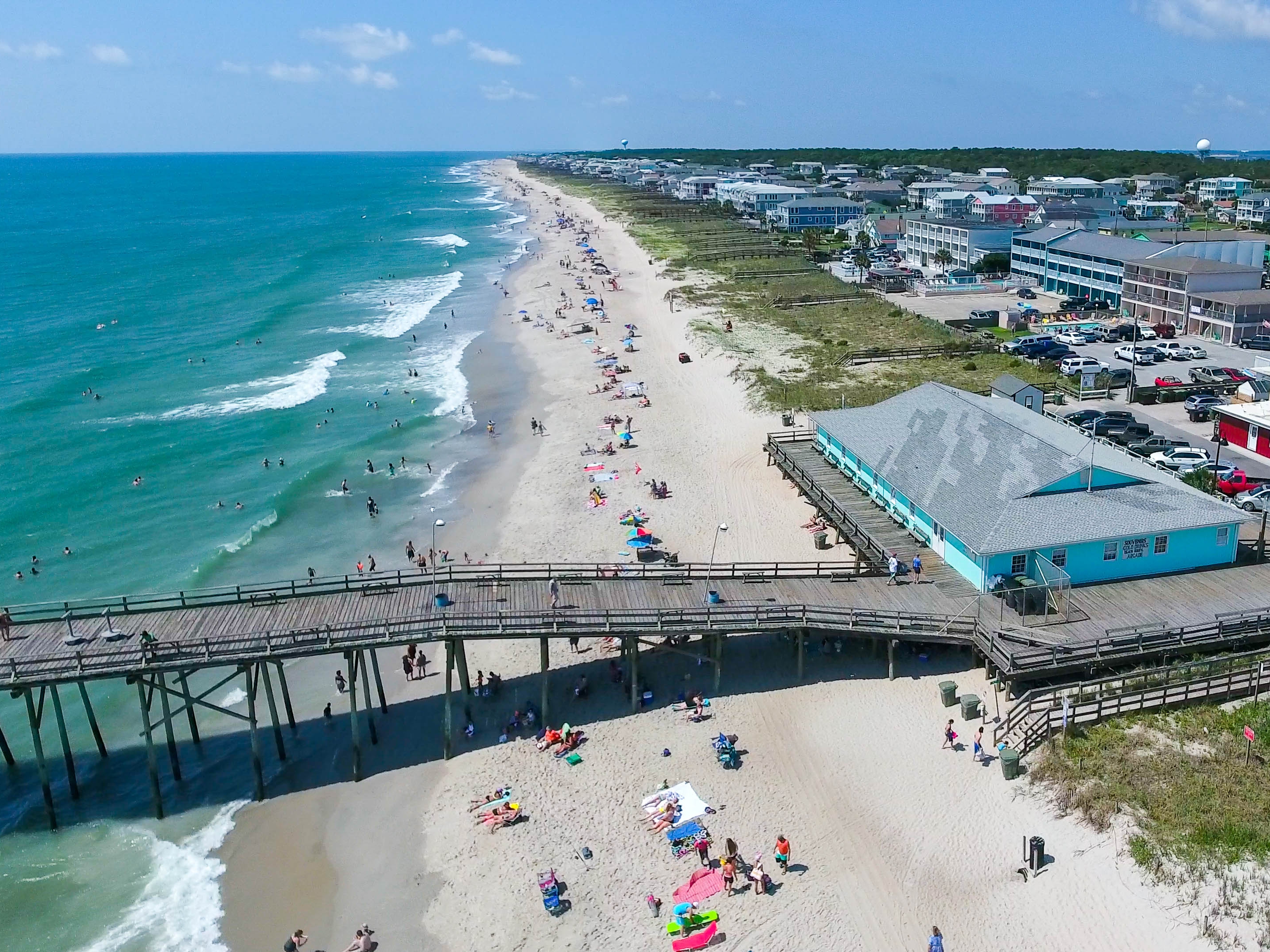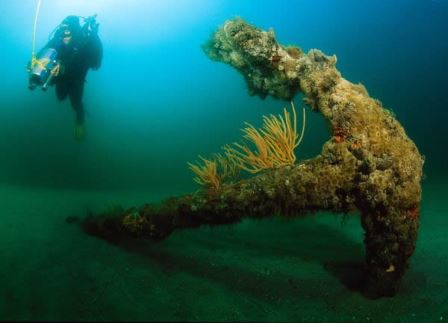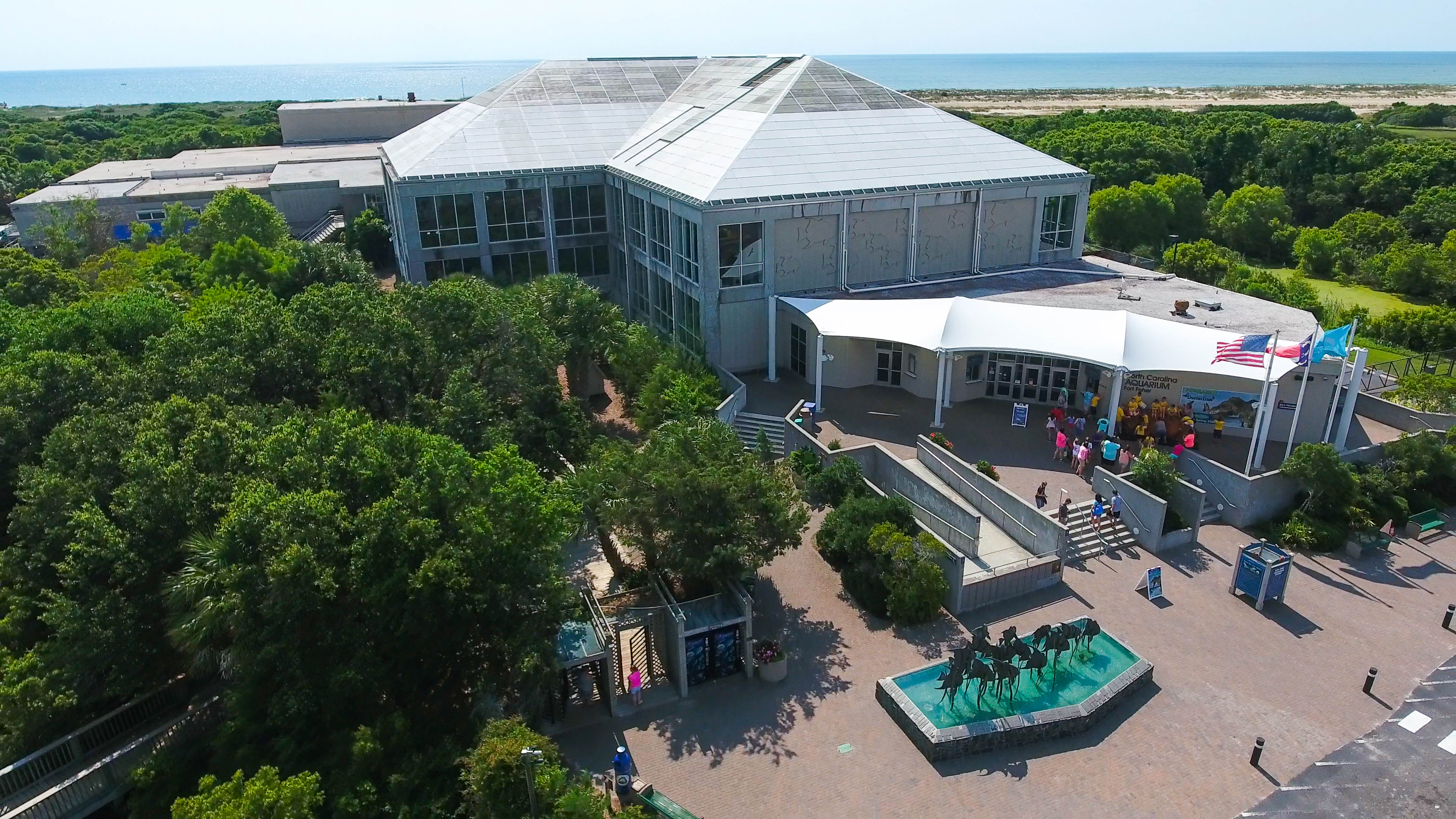Kure Beach Fast Facts

- The Kure Beach Fishing Pier is one of the oldest on the Atlantic Coast. The original pier was built in 1923 and has been rebuilt and restored several times since then as a result of wear and tear over the years. Today, visitors can not only fish and buy tackle, bait, and rod and reel combos, but can also stroll the 711 feet of wooden planks, visit the concession stand, play at the arcade and shop the large souvenir area.
- Fort Fisher, located at the south end of Kure Beach, was a Confederate fort during the Civil War and the site of the largest land-sea battle of the Civil War. By 1865, the supply line through Wilmington was the last remaining supply route open to Robert E. Lee’s army. Fort Fisher finally fell after a massive assault in 1865, and the Confederacy was defeated. Approximately ten percent of the fort still stands today.

- Kure Beach’s coquina rock formation is home to a very rare and distinctive mossy hard rock outcropping. Only visible during low tide, the rock is cemented together by seashells and coral with an estimated origin ranging from 12,000 to 80,000 years ago. Located near the coast of Fort Fisher, it is a true natural wonder and remains the only rock formation on the coast of North Carolina that is home to a variety of wildlife.
- Zeke’s Island Reserve is one of the most important shorebird feeding habitats on the East Coast thanks to species including great blue herons, dunlin, white ibis and more.
- The Moran Motel originated in 1959. With its vintage jade-green and pink-brick color scheme, it has been used in a number of feature films and TV movies.

- Fort Fisher State Recreation Area is home to 16 threatened and endangered species, including Loggerhead sea turtles in the warmer months and hawks, warblers and peregrine falcons in the fall. It is also home to 212 species of birds.
- Loggerhead turtles are one of the most popular animals found along Kure Beach. The average Loggerhead measures around 35 inches when fully grown and typically nests on the ocean beaches during the warmer months. They are now considered an endangered species as a result of untended fishing gear and the loss of suitable nesting beaches.
- Palm Air Cottages were built in the late 1950s and early 1960s. The private, poolside cottages still attract generations of families each year.

- The Civil War Blockade Runner “Condor” was recently dedicated as North Carolina’s first heritage dive site. The steamer ran aground in 1864 with famous Confederate spy Rose Greenhow on board. The Condor rests in 25 feet of water, 700 yards off the shore in front of the North Carolina Aquarium at Fort Fisher, where buoys mark the site along with mooring lines for boats and kayaks. Dive enthusiasts are encouraged to explore the Condor June through November each year.
- The Underwater Archaeology Branch of the North Carolina Office of State Archaeology (UAB) is located in Kure Beach. UAB projects and exhibits range from the prehistoric to the present. The office maintains extensive records on everything from wooden dugout canoes to iron-hulled blockade runners and classic steamboats. In all, the UAB keeps track of more than 5,000 documented shipwrecks.

- The North Carolina Aquarium at Fisher Fisher – which has been named as one of the top aquariums in the U.S. multiple times by Trip Advisor – is home to Luna, a rare albino alligator.
- The North Carolina Aquarium at Fort Fisher has future plans for a new Asian small-clawed otter habitat. Asian small-clawed otters are considered a ‘vulnerable’ species due to habitat loss and exploitation. Their anticipated arrival is part of the aquarium’s ongoing conservation efforts.
For more background information, contact Connie Nelson 1-866-266-9690, ext. 120


